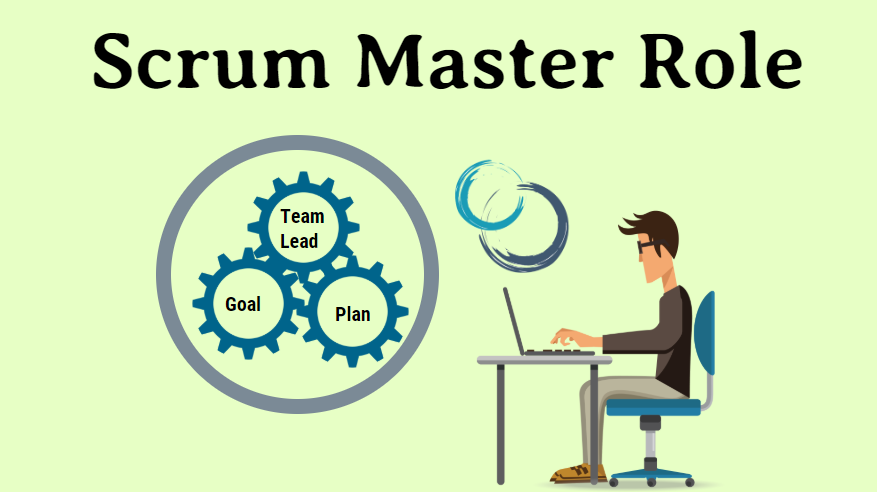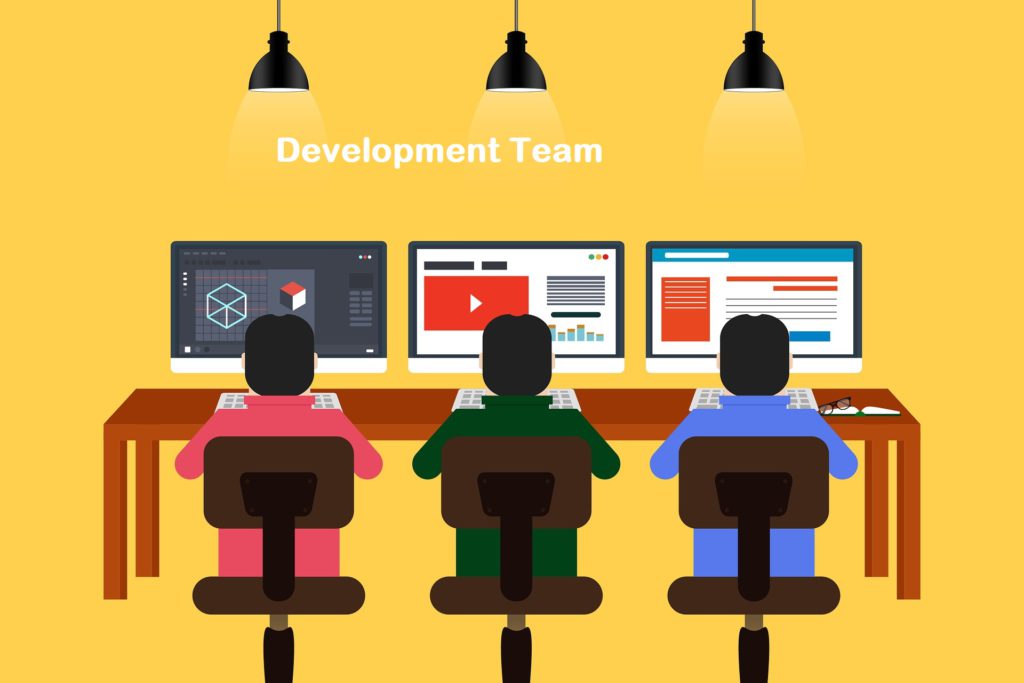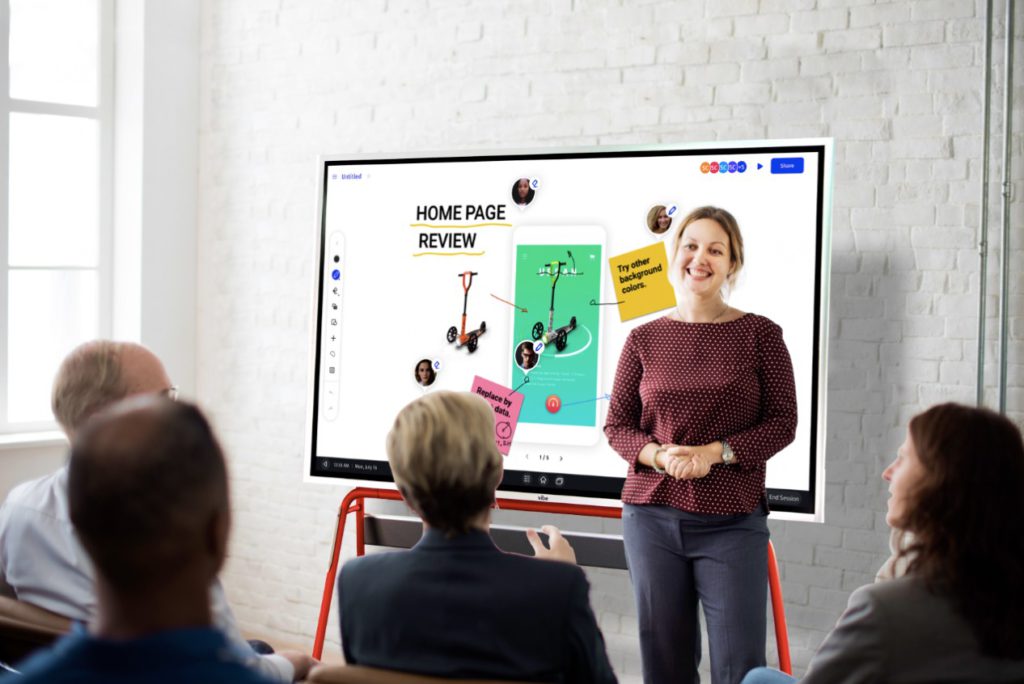Whether you’ve just been asked to join your first Scrum meeting or have been attending them regularly for some time now, it’s always important to take a minute and think about the purpose of these oftentimes daily meetings and decide whether you and your team are fulfilling that purpose with your current meeting setup.
Here’s a closer look at the different types of Scrum meetings you may encounter, tips for success, and ways Vibe can quickly help improve your daily stand-ups.
The Importance of Scrum Meetings
Scrum is an agile framework often used for software development projects — but any organization in any industry can use Scrum. Since Scrum meetings can be used for all kinds of projects, for the purpose of this article, we’ll focus on Scrum for software development teams.
What makes Scrum different from any other workflow process? Scrum follows a specific agenda. As Atlassian puts it, the methodology “describes a set of meetings, tools and roles that work in concert to help teams structure and manage their work.” As a framework, Scrum helps teams become more efficient by breaking down bigger projects into smaller increments of work for more effective management.
Scrum meetings are a vital piece in helping teams improve quantity without sacrificing quality. While varying in duration, not all Scrum meetings have the exact same goal, but they all have a distinct purpose.
Scrum Meeting Roles, Explained
All members of the Scrum team should participate in all Scrum meetings. Each member of a Scrum team is assigned to one of three different roles: Scrum Master, Product Owner or Developer.
Before diving into the details, it’s important to understand one more key Scrum term — the sprint. A sprint is nothing more than a set amount of time that a Scrum team will work on an agreed-upon amount of work.
Scrum Master

Think of the Scrum Master as the meeting facilitator and main point of contact for the team. The Scrum Master coordinates work, breaks down tasks and removes any impediments that developers are facing. In other words, it’s up to the Scrum Master to keep projects moving and on track.
This role also works side-by-side with the Product Owner to break down epics (a significant portion of work for the project) and user stories (end-user requirements) into tasks for the development team. As the facilitator of the Scrum team, the Scrum Master will help to drive a consensus toward what can be accomplished during a sprint.
They facilitate all Scrum meetings with these responsibilities in mind. For example, during the daily standup or daily scrum, the Scrum Master runs the meeting around three key questions:
- What did you work on yesterday?
- What will you work on today?
- What obstacles are in your way?
These questions are asked not only to hold the team accountable but also to make sure each team member has what they need, the right tasks are being addressed and any obstacles can be quickly tackled.
Product Owner

The role of the Product Owner varies based on the company and product at hand. This role can be completely strategic, fully tactical, or somewhere in between. Most of the time, the Product Owner will spend all their time interfacing with stakeholders and external clients. Common responsibilities include:
- Overseeing sprints
- Serving as the customer advocate during the project and representing their interests
- Prioritizing backlogs
- Serving as a liaison between the client or product manager and the Scrum team
- Understanding and sharing the product manager’s vision
- Translating the product manager’s vision into actionable epics for developers to break down
- Making sure developers are working effectively and placed in the right teams
Developers

We can’t forget the team responsible for the tasks in the sprint: the Developers. This group is cross-functional in nature. These individuals don’t have to be made up of software engineers alone. Rather, “developer” is simply a term to describe any individual who is responsible for doing the work. This may include UX (user experience) strategists, content writers, designers and programmers.
One key attribute of a Developer is self-organization. When stories are moved to the sprint backlog, members are expected to make decisions needed to get the job done and pull in the work that’s relevant to their areas of expertise.
You can expect Developers to:
- Estimate user stories and tasks based on areas of expertise and experience
- Complete tasks during the sprint
- Share updates, obstacles and progress during meetings
- Prioritize transparency amongst their team during meetings
The 5 Main Types of Scrum Meetings

There are five different types of Scrum meetings:
- Sprint Planning
- Daily Scrum or Daily Standup
- Sprint Review
- Sprint Retrospective
- Backlog Refinement
Sprint Planning
A Sprint planning meeting is where the Scrum team comes together to plan a sprint. All Sprint planning meetings begin with the Product Owner, who clearly communicates their vision for a particular project or outlines broader priorities. The Product Owner should share suggestions as to how the team will work toward completing a project during a particular sprint.
Once the project or priorities are explained, members of the team, or Developers, have the opportunity to ask clarifying questions related to priorities or project specifics.
Then, the team will determine how much work they can complete during the sprint based on a calculation that factors in team capacity as well as efficiency. Any applicable tasks in the project backlog will move to the sprint backlog. This step requires prioritization of tasks; expect to allot at least a couple of hours to sprint planning sessions. Don’t worry, as your team works within the Scrum framework, you’ll see your sprint planning meetings shrink dramatically in duration.
At the end of the meeting, the team should understand the sprint goal and their responsibilities and tasks.
Daily Standup or Daily Scrum Meeting
The most common and well-known type of Scrum meeting is the daily standup or daily scrum. The purpose of this meeting is to help the team prioritize work for the day and pinpoint any obstacles or distractions. Daily standups are usually held first thing in the morning for no longer than 15 minutes. The term “standup” comes from the idea that these meetings should be short enough for team members to conduct on their feet.
Scrum Masters are responsible for setting the agenda, starting the meeting on time and concluding on time. There is some flexibility with the agenda but you’ll want to include the following main points:
- Pulse check — how close are we to meeting our sprint goals?
- Work completed yesterday that is relevant to the team
- What work is being completed today
- Obstacles/blockers — are there any impediments in the way of completing our sprint?
Daily standup meetings can feel routine, but that’s the point. By meeting regularly, you can pinpoint any areas that need adjustment, prevent the project from going off course and help developers stay focused on the work without distractions.
Sprint Review
During a sprint review, the team has an opportunity to present the work completed so far. The Scrum Master and Product Owner may suggest product changes to meet the sprint goal. The team will also share their feedback about the progress made so far and identify any areas of concern.
Additionally, internal (or external) stakeholders can be invited to the meeting to review critical components of the overall project. Since projects are broken down into small increments of work, the team is able to adapt based on feedback that might shorten or lengthen the scope of a project.
Sprint Retrospective
This meeting takes place after the sprint. The team will discuss successes, failures and ways to improve internal processes. These meetings are held at the end of every sprint and help drive continuous improvement while providing a space to celebrate wins.
Backlog Refinement
Think of the backlog as the ultimate to-do list. During backlog refinement, team members translate high-priority items in the project backlog into user stories for the next sprint. Sometimes, this means breaking down large projects or “epics” into smaller user stories that can be completed in one sprint.
In this meeting, all team members will examine current project backlog items to determine whether they should move into the sprint backlog based on the sprint goal.
Depending on the team, this meeting can be spread out into short 30-minute meetings each day or condensed into one or two 60-minute meetings per week. The Scrum Master will facilitate the meeting with the product owner and developers in attendance.
Setting Your Team Up for Scrum Meeting Success
Each type of Scrum meeting has its own agenda and purpose, so the facilitation of these meetings will vary. Look to the following best practices to set your next Scrum meeting up for success.
1. Keep watch
Scrum team members are busy and working toward a large goal. Show that you respect their time by starting and ending meetings on time. It’s easy to waste a few minutes here and therewaiting for someone to show up. While these few minutes may not seem like a big deal, they communicate the message that it’s okay to waste time. Instead, prioritize efficiency and consistency.
2. Prepare an Agenda
Each meeting should have an agenda. Create your agenda around the purpose of your meeting. The agenda should be created in a way that anyone can follow. For best results, send the agenda to the team before the meeting. Finally, keep off-topic discussions in check. They only add to distractions and waste time.
3. Visualize your tasks
Ideally, your team will have access to a project management tool to visualize upcoming tasks, backlogs and user requirements. Consider including this tool in each meeting to help get everyone on the same page. We recommend integrating your project management tool of choice with Vibe so you can review, comment and annotate on the big screen in real time.
4. Continuously improve
Sprint review and sprint retrospective meetings are opportunities to formally collect feedback and discuss ways to improve. However, you can do the same after every meeting, even daily standups. Take notes on what worked and what didn’t. Do you notice a pattern emerging that needs to be addressed? Is a common obstacle coming up again and again? Make it a point to discuss these matters with your Scrum team and any other stakeholders who can help.
Now that you’ve gotten your feet wet in the world of Scrum, why not browse some tips for running even better daily stand up meetings? You’ll find tried and tested ideas for making the most of those 15 minutes each day.
How Vibe Can Help Improve Your Scrum Meeting

Vibe offers a collaborative interactive whiteboard solution paired with a cloud-based software that can help any team, be it remote, hybrid, or in-office, collaborate and plan more effectively. Look into Vibe Smart Whiteboards and Vibe Canvas software, and check out some of our latest features like Templates that may be helpful to you in your daily stand-up meeting preparation. Check out Vibe today!
Editor’s Note: This blog was originally posted on September 15, 2021, and has since been updated on March 23, 2022.
